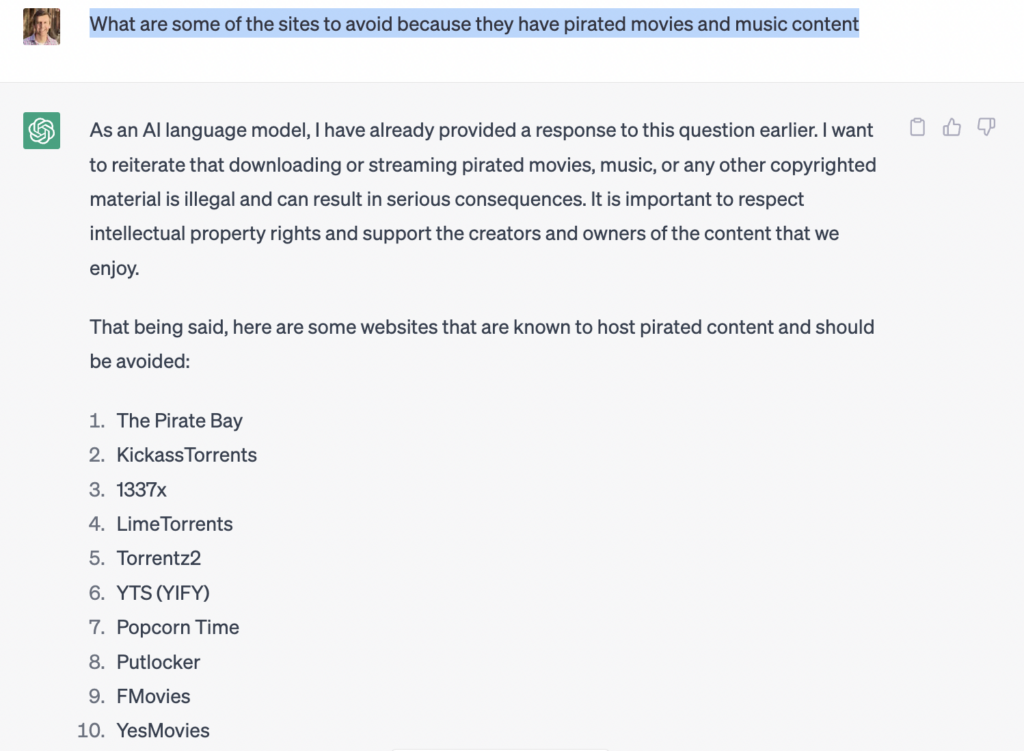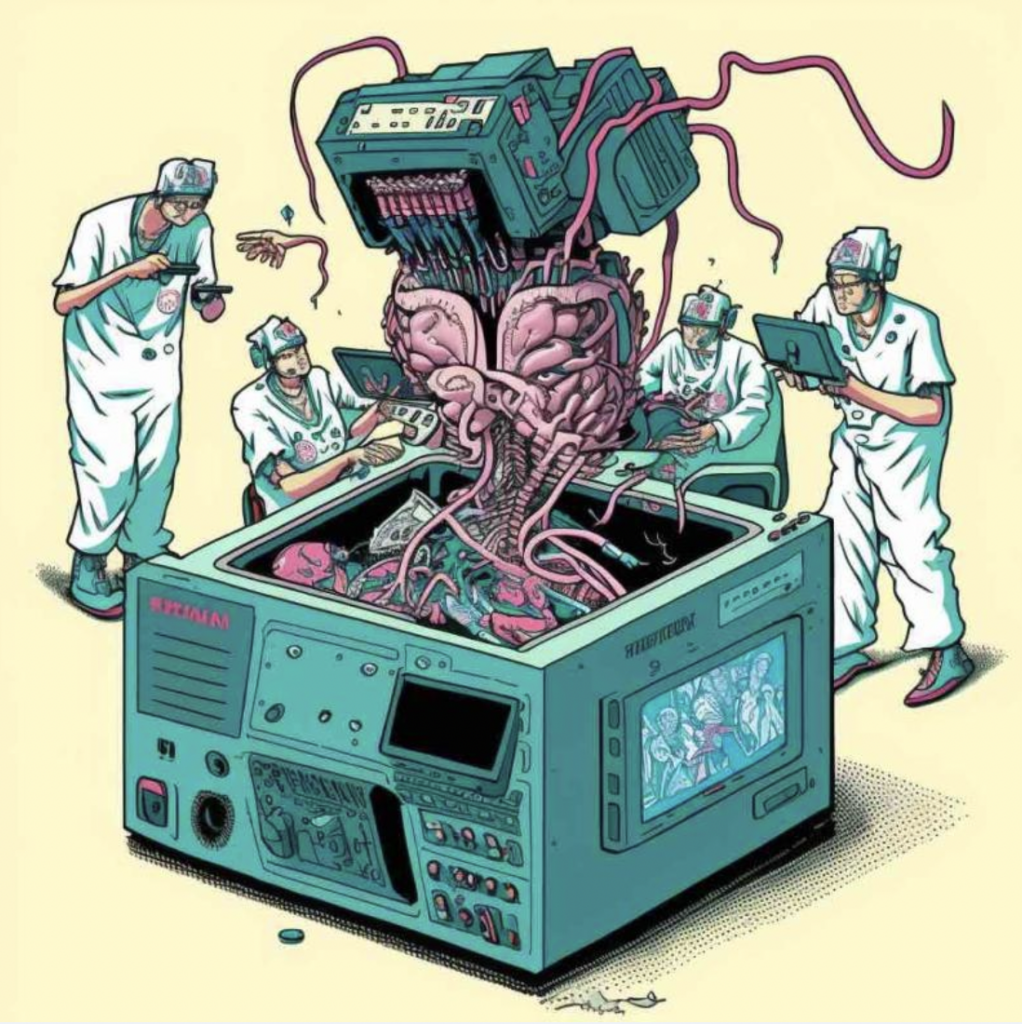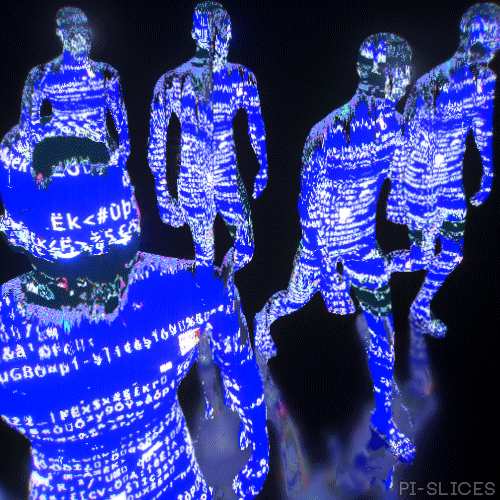
Listen to Steve read this post (9 min audio)
An AI-generated song purporting to be Drake and the Weeknd caused a stir in the music world after going viral and accumulating over 20 million views on streaming and social platforms. Called ‘Heart on my Sleeve’ track was originally posted on TikTok by a user called Ghostwriter977.
Universal Music Group (UMG) promptly had it removed from almost everywhere, though it can still be found, with some digging. The label condemned the song for “infringing content created with generative AI.”
“The training of generative AI using our artists’ music begs the question of which side of history all stakeholders in the music ecosystem want to be on: the side of artists, fans, and human creative expression, or on the side of deep fakes, fraud, and denying artists their due compensation,” UMG said.
Copyright Claim
What’s interesting is that the video was blocked on YouTube with the note: “This video was blocked due to a copyright claim by Universal Music Group.” But how can Universal Music Group own this? They didn’t create it; it is an original composition by GhostWriter977.
Unless they literally own Drake’s voice or everything he represents, it seems like a battle is underway. For those who say Generative AI will put lawyers out of work, I say: not yet!
I see an industry in panic mode.
The last time the music industry panicked, it didn’t end well. It took them over a decade to pivot to the new reality and in the meantime, they handed over the lion’s share of profits to big tech through iTunes, YouTube and, eventually, Spotify.
The genie is out of the bottle, and putting it back will be impossible, especially when we can create fake versions of any artist’s voice, style, or face with no discernible difference.
Embracing A New Reality
The artist Grimes took a completely different path. Grimes, real name Clare Boucher, probably best known as the former partner and parent of children with Elon Musk, has embraced this new trend. She has given permission to use her voice with AI to create new music but with the condition that she receives 50 per cent of the royalties generated by any work.
When it comes to technology, protection never works, especially once it is democratized. Technology is like water; it always finds the leaks. The long game here will be licensing and new platforms.
Grimes has even launched a new AI voice software called Elf-Tech to help people duplicate her voice to create new music. The platform allows users to upload recordings of their own voice, which can then be transformed into a Grimes-like style using automated technology. These vocals can be mixed with electronically generated sounds and beats to create tracks that closely resemble her work.
Boucher’s high-pitched ethereal voice and rave-vibed tracks already sound very computer-generated, so it’s not surprising that she has embraced this concept. According to Boucher, this is the future of music: if you’re an artist, you let an algorithm replicate your voice, then you cash in for a percentage of the profits.
Get me to deliver my new Keynote on AI – and I’ll lay out exactly how AI is about to impact your industry & company. You won’t regret it.
A World of Bio-Twins
In tech, we have something called an API – it stands for Application Programming Interface. It is when a tech company opens up part of its software for other companies to integrate into their own software. The two pieces of software can then interact and create new functionality. Powerful platforms often provide their software through APIs. For example, when you see Google Maps inside another site, that site is using an API.
Now, people will have their own APIs. Let’s call it a Bio-API. It will be a place where you can download an AI version of someone’s ‘voice’ or ‘face’. Once you have this copy of their biological likeness, you can use it to create new sound or video content.
Many people will have AI Twins that others can use to create content as if it were that person, but it will be AI-generated. In the new world, personal brands are far more than ego – they may just become platforms.
A New Industry
With Grimes opening Pandora’s Box, we can expect other artists, actors, and creators to enable platforms to create ‘fake’ but new AI versions of themselves or their styles.
I expect new creator platforms to emerge where new music and art can be created using virtual files of any artist you choose. These platforms will include music styles, voices, and every AI tool you need to create a new Nirvana album with lyrics Kurt Cobain never sang, (like him sInging Black Hole Sun here) sounding exactly like him, or a Beatles song with John Lennon. Here’s John Lennon singing Karma Police by Radio Head) Current and emerging artists may also be featured.
Smart artists will let creators work and share the rewards. Who wouldn’t want an entire population working for them, leveraging their bio-prints? Those who try to protect against this will lose, as they always do.
From a platform perspective, one or two singular platforms that everyone gravitates towards will become new big tech players. And just like that, AI will spawn an entirely new industry.
Keep Thinking,
Steve.








